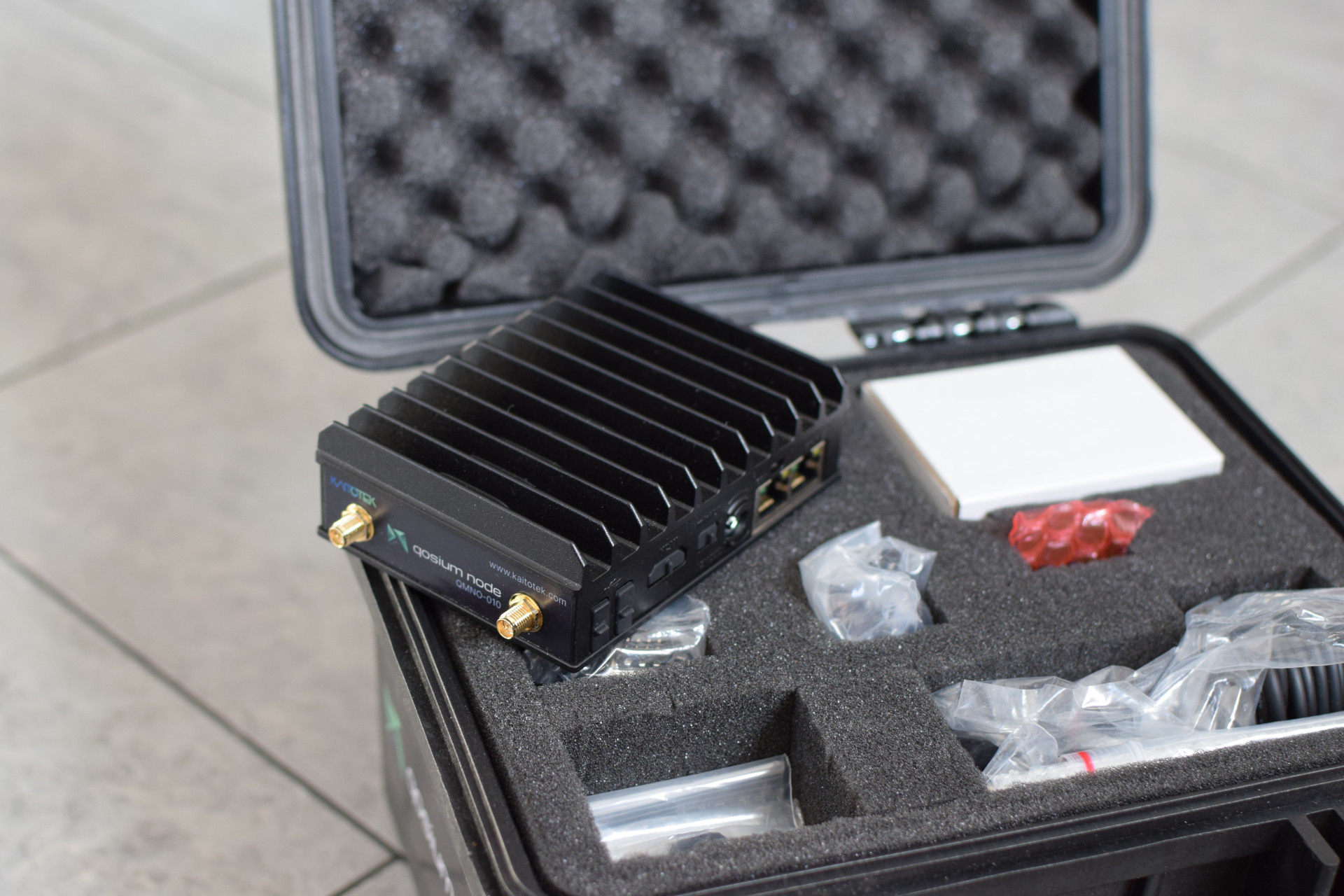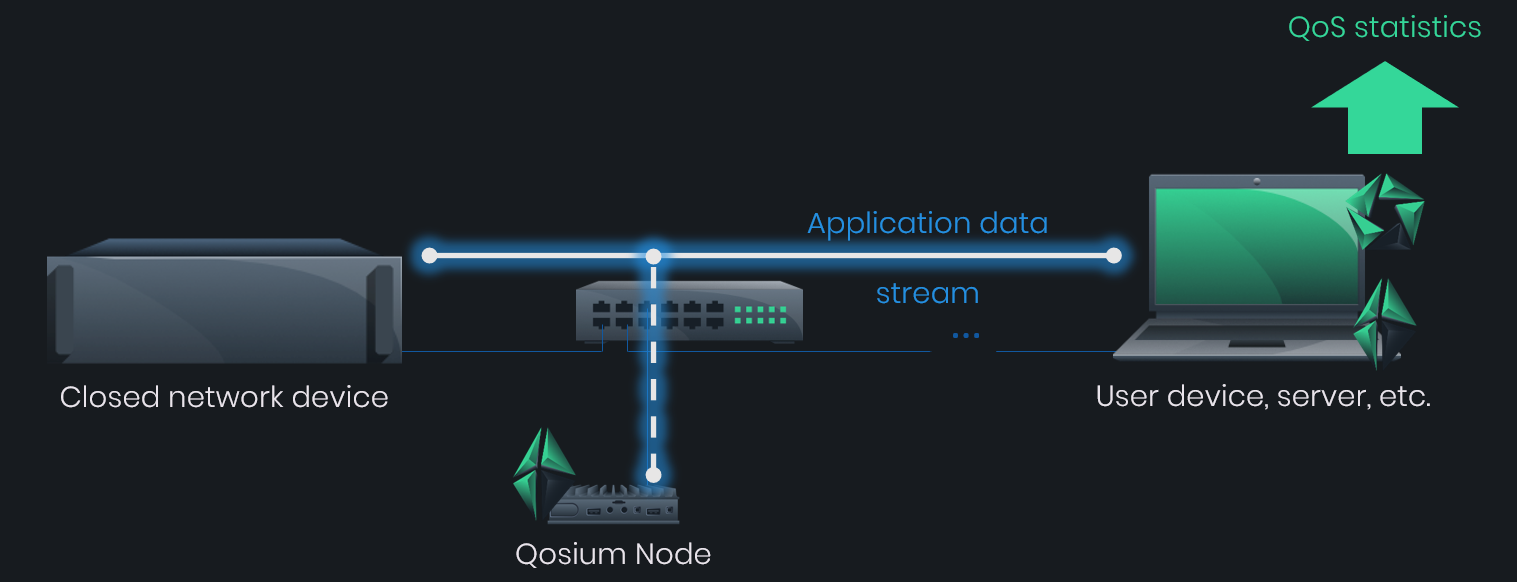Overview
Qosium Node is a standalone device for network quality and performance measurements. It is based on a small but powerful industry PC suitable for harsh conditions. All Qosium measurement software comes integrated with a permanent license. Controlling the device and measurements is easy with Node’s web UI.
The primary use case of Qosium Node is to bring a measurement point to a network where it is impossible to install Qosium measurement software. However, Node provides extensive possibilities for using it also as an active part of your network, e.g., to act as a test application server. In addition, Node includes network emulator functionalities for creating varying impairments (delay, jitter, and packet loss) for the connection quality.
The device comes in two versions, both containing Qosium GP. Another version of Node also includes Qosium Storage. Several accessories are available, e.g., a GNSSGlobal Navigation Satellite System
A general term under which all the different global satellite navigation systems (e.g., GPS, GLONASS, Galileo, BDS) fall. device for positioning and accurate clock synchronization, different kind of brackets, and a handy hard case.






